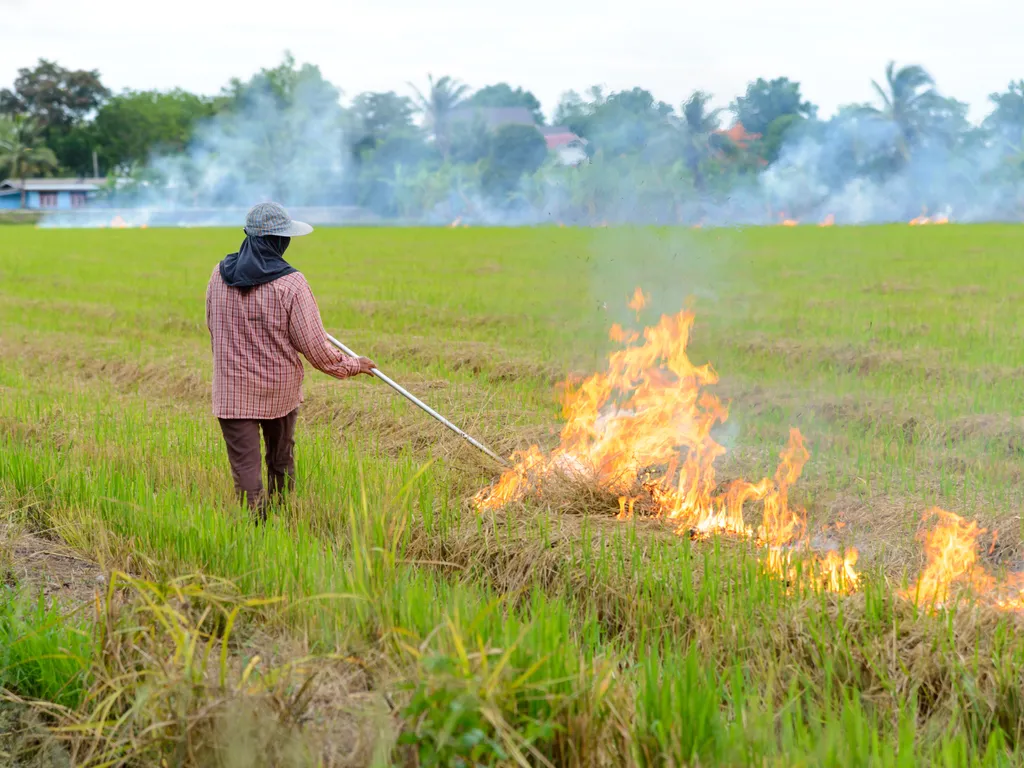In the heart of Thailand’s agricultural landscape, a silent but potent contributor to greenhouse gas emissions has been burning—literally. A recent study published in the journal *Sustainable Environment Research* (translated from Thai as *Research on Environmental Sustainability*) sheds light on the environmental and economic impacts of agricultural residue burning, a practice that has long been a cost-effective but environmentally detrimental norm. Led by Yingluck Kanchanaroek from the College of Interdisciplinary Studies at Thammasat University, the research offers a stark look at the consequences of this practice and points toward potential solutions.
Thailand’s rice, maize, and sugarcane fields, which collectively span 96.8 million Rai, generate a staggering 114 million tons of agricultural residues annually. The common practice of open burning these residues is not only a significant source of greenhouse gas (GHG) emissions but also a considerable economic burden. Using Geographic Information System (GIS) techniques and MODIS satellite imagery, Kanchanaroek and her team quantified the burned areas and estimated GHG emissions, revealing that approximately 800,000 tons of CO₂ equivalents are released into the atmosphere each year. “The emissions from rice, maize, and sugarcane burning are substantial and disproportionately affect the Northern and Central Regions,” Kanchanaroek notes.
The study highlights that rice cultivation is the largest contributor, with emissions totaling 362,231 tons of CO₂ equivalents, followed by sugarcane at 277,314 tons and maize at 160,875 tons. The Social Cost of Carbon (SCC), a metric that quantifies the economic damages associated with GHG emissions, is estimated at 146 million Baht annually. This economic impact, combined with the environmental degradation, underscores the urgent need for sustainable alternatives.
Kanchanaroek emphasizes that the findings are not just about numbers but about identifying hot-spots and informing targeted policy interventions. “Our spatial analysis provides critical insights that can guide regionally tailored policies to mitigate the environmental and economic costs of open burning,” she explains. The study recommends sustainable alternatives such as composting, supported by targeted education, financial incentives, and policy measures.
For the energy sector, the implications are significant. As Thailand strives to meet its climate and sustainability goals, reducing GHG emissions from agricultural residue burning could open new avenues for renewable energy and carbon credit opportunities. “By addressing this issue, we can improve air quality, reduce economic losses, and align with global climate commitments,” Kanchanaroek adds.
The research published in *Sustainable Environment Research* not only highlights the pressing need for change but also offers a roadmap for action. As the agricultural sector grapples with the dual challenges of productivity and sustainability, the findings from this study could shape future developments in the field, fostering a more environmentally conscious and economically resilient agricultural landscape.

